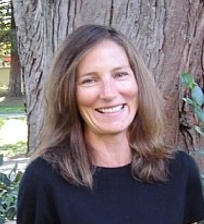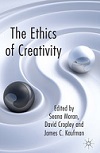
Seana Moran, Ed.D.
Research Associate Professor
Department of Psychology
Clark University
Worcester, MA 01610-1477
Phone: 508.793.7272
Email: smoran@clarku.edu
Curriculum Vitae
Purpose Around the World Lab: learning4purpose.org
Dr. Moran received a B.A., summa cum laude, from the University of Southern California , an M.B.A. from the University of New Mexico, an M.Ed. in Mind, Brain and Behavior plus an Ed.D. in Human Development & Psychology from Harvard University, and postdoctoral training at Stanford University.
Recent Grant
How service-learning influences youth purpose around the world. S. Moran (PI) with partners at 8 universities in 6 countries. Funded by The John Templeton Foundation. For more information, see: learning4purpose.org
Teaching
2016 Undergraduate Outstanding Teacher Award Finalist, Clark University
PSYC 101: General Psychology
PSYC 204: Lab in Decision-Making
PSYC 252: What Is My Purpose in Life? First Seminar
PSYC 271/371: Creativity, Collaboration & Human Development Capstone
PSYC 292: Research on Youth Purpose / Learning 4 Purpose Lab
Dr. Moran has also has taught applied psychology/internship and program evaluation at Clark, as well as adult development, adolescent development, professional ethics, leadership, youth entrepreneurship, advertising, and marketing at other universities and in professional trainer and coach roles.
Current Research
Dr. Moran’s research interests take a developmental perspective on how individuals make contributions to situations, institutions and communities and how they recognize themselves as contributors. Each of us is part of the “environment” for others’ development: psychology includes not just how environmental stimuli affect an individual’s psychology, but also how an individual’s psychology stimulates other individuals’ thinking, emotions, and behavior, as well as institutionalized norms, understandings, and behaviors. . Our interactions—direct and interpersonal, or indirect through media and artifacts—jointly develop the community, society, culture, and the future we share. In particular, Dr. Moran examines the developmental paths to exemplary forms of contribution, including creativity (which transforms the trajectory of culture), prosocial life purpose (which gives a positive, inclusive direction to a person’s life trajectory), wisdom (which is considered a deep, systemic knowledge of, and skill for affecting, how aspects of the world are interconnected).
Her current projects are: (1) how do service-learning and purpose development interact to build life momentum and prosocial contribution in youth worldwide? (2) how does an individual's and a culture's current notions of “good” affect whether and how creativity is manifested, and how do creative contributions, in turn, sometimes lead to moral turbulence? (3) how does the way we think about the civic realm—including our metaphors for civic activity—influence the possibilities we can see for contributing wisely to the common good?
Selected Publications
Books





Tirri, K., Moran, S., & Mariano, J. M. (Eds.). (2018). Education for purposeful teaching around the world. London, UK: Routledge.
Moran, S. (2016). Ethical ripples of creativity and innovation. Basingstoke, UK: Palgrave Macmillan
Moran, S., Kaufman, J. C., & Cropley, D. H. (Eds.). (2014). The ethics of creativity. Basingstoke, UK: Palgrave Macmillan.
Chen, J-Q., Moran, S., & Gardner, H. (Eds.). (2009). Multiple intelligences around the world. San Francisco: Jossey-Bass.
Sawyer, K., John-Steiner, V., Moran, S., Sternberg, R.J., Feldman, D.H., Nakamura, J., & Csikszentmihalyi, M. (2003). Creativity and development. New York: Oxford University Press.
Other Selected Publications
Life Purpose
Moran, S. (Ed.). (2018). Special issue: Purpose-in-action education. Journal of Moral Education, 47(2).
Moran, S. (Ed.). (2017). Special issue: Youth purpose around the world. Journal of Moral Education, 46(3).
Moran, S. (2018). Purpose-in-action education. Journal of Moral Education, 47(2), 145-158.
Kawai, T., & Moran, S. (2017). How do future life perspective and present action work in Japanese youth development? Journal of Moral Education, 46(3), 323-336.
Moran, S. (2017). Youth purpose worldwide: A tapestry of possibilities. Journal of Moral Education, 46(3), 231-244.
Moran, S. (2016). What do teachers think about youth purpose? The Journal of Education for Teaching, 42(5), 582-601.
Moran, S. (2014). What does “purpose“ means to youth: Are there distinct cultures of purpose? Applied Developmental Science, 18(3), 1-13.
Malin, H., Reilly, T.S., Quinn, B., & Moran, S. (2013). Adolescent purpose development: Exploring empathy, discovering roles, shifting priorities, and creating pathways. Journal of Research on Adolescence, 24(1), 186-199.
Moran, S., Bundick, M., Malin, H., & Reilly, T.S. (2012). How supportive of their specific purposes do youth believe their family and friends are? Journal of Adolescent Research, 28(3), 348-377.
Moran, S. (2010). Changing the world: Tolerance and creativity aspirations among American youth. High Ability Studies, 21(2), 117-132.
Moran, S. (2009). Purpose: Giftedness in intrapersonal intelligence. High Ability Studies, 20(2), 143-159.
Creativity
Moran, S. (2018). Commitment and creativity: Transforming experience into art. In C. Connery, V. John-Steiner, & A. Marjanovic-Shane (Eds.), Vygotsky and creativity: A cultural-historical approach to meaning-making, play, and the arts, 2nd ed. (pp. 141-160). New York, NY: Peter Lang.
Moran, S. (2015). Adolescent aspirations for change: Creativity as a life purpose. Asia Pacific Education Review, 16(2), 167-175.
Moran, S. (2015). Creativity is a label for the aggregated, time-dependent, subjective judgments by creators and adopters. Creativity: Theories-Research-Applications, 2(1), 64-69.
Moran, S. (2011). Multiple intelligences. In M. A. Runco & S. R. Pritzker (Eds.), Encyclopedia of creativity, 2nd ed. (pp. 161-165). San Diego, CA: Academic Press.
Moran, S. (2010). The roles of creativity in society. In J.C. Kaufman & R.J. Sternberg (Eds.), The Cambridge handbook of creativity (pp. 74-90). New York: Cambridge University Press.
Moran, S. (2010). Creativity in school. In K.S. Littleton, C. Wood, & J.K. Staarman (Eds.), International handbook of psychology in education (pp. 319-360). Bingley, UK: Emerald Group.
Moran, S. (2009). What role does commitment play among writers with different levels of creativity? Creativity Research Journal, 21(2-3), 243-257.
Moran, S. (2009). Creativity: A systems perspective. In T. Richards, M. Runco, & S. Moger (Eds.), The Routledge companion to creativity (pp. 292-301). London: Routledge.
Moran, S., & Gardner, H. (2006). Extraordinary cognitive achievements: A developmental and systems analysis. In W. Damon (Series Ed.) & D. Kuhn & R.S. Siegler (Vol. Eds.), Handbook of child psychology: Vol. 2 Cognition, perception, and language (6th ed.; pp. 905-949). New York: Wiley.
Moran, S., & John-Steiner, V. (2003). Creativity in the making: Vygotsky’s contribution to the dialectic of creativity and development. In K. Sawyer et al., Creativity and development (pp. 61-90). New York: Oxford University Press.